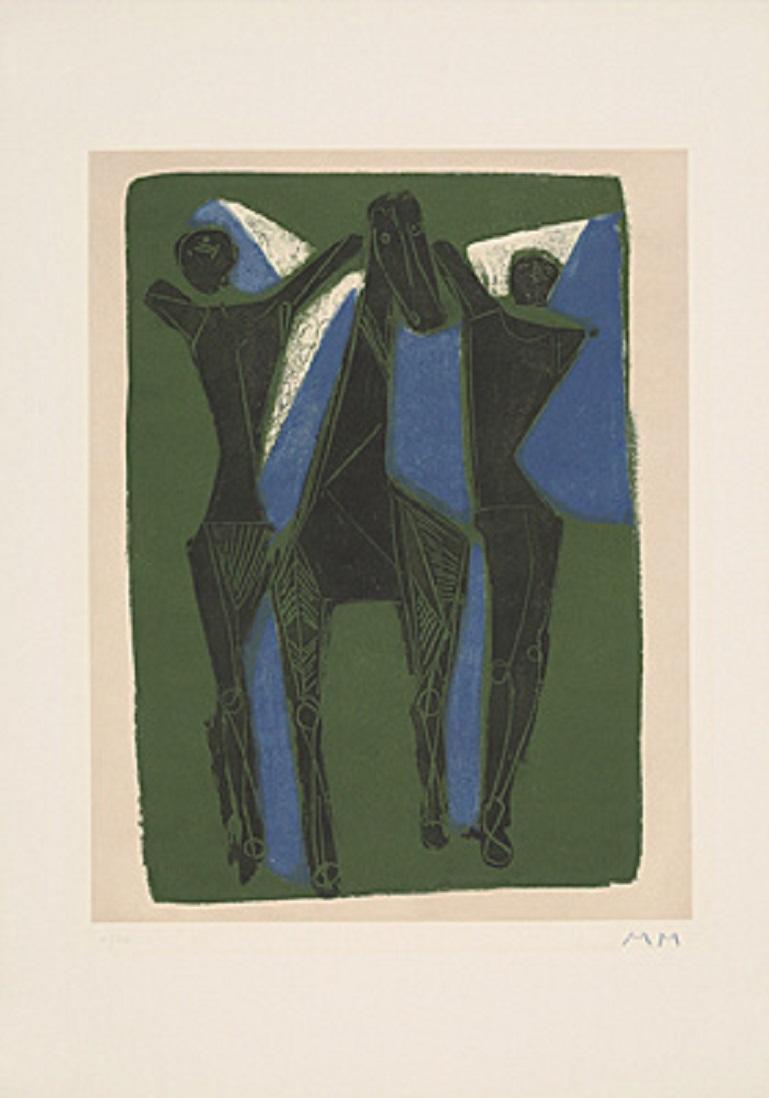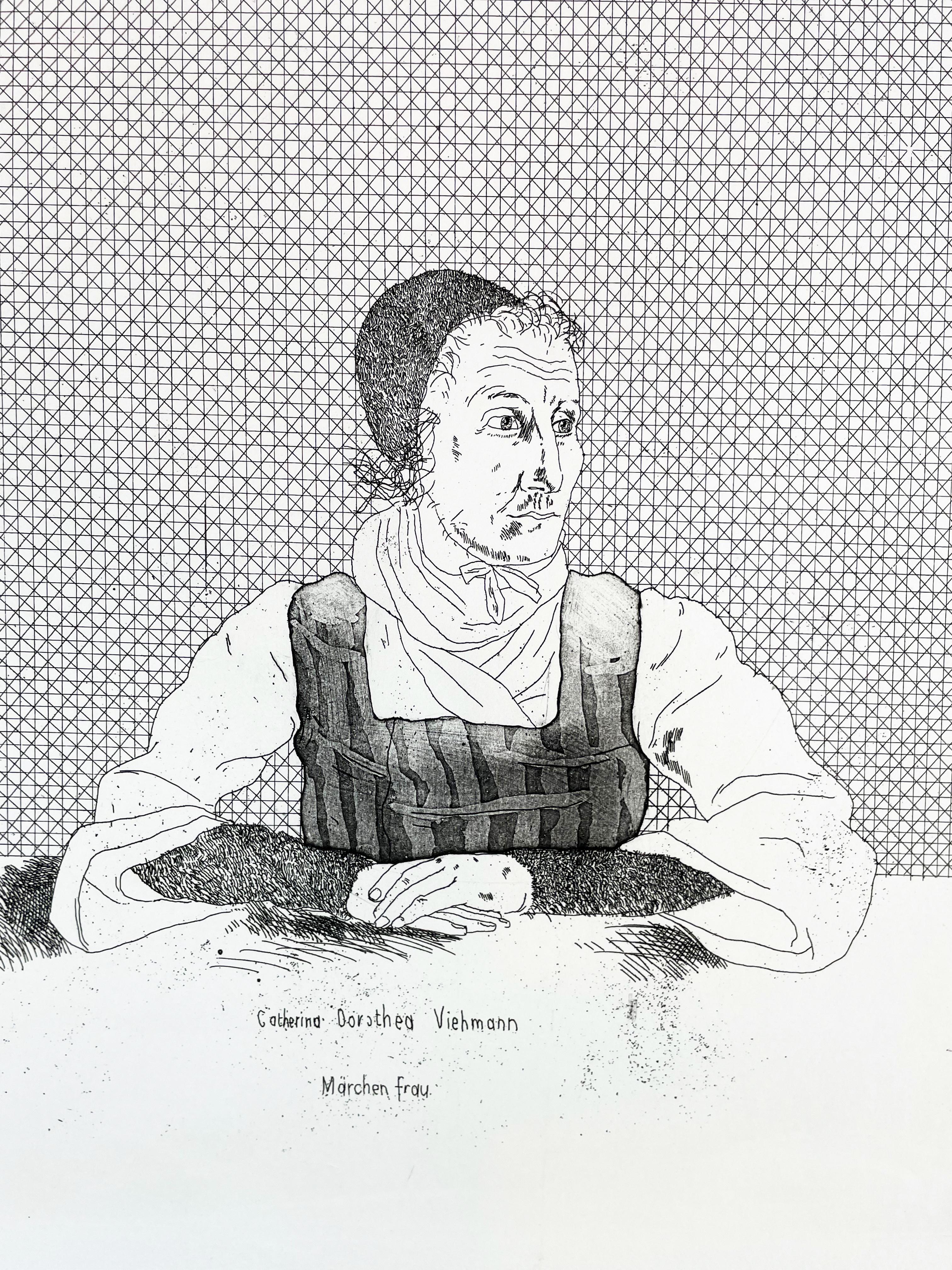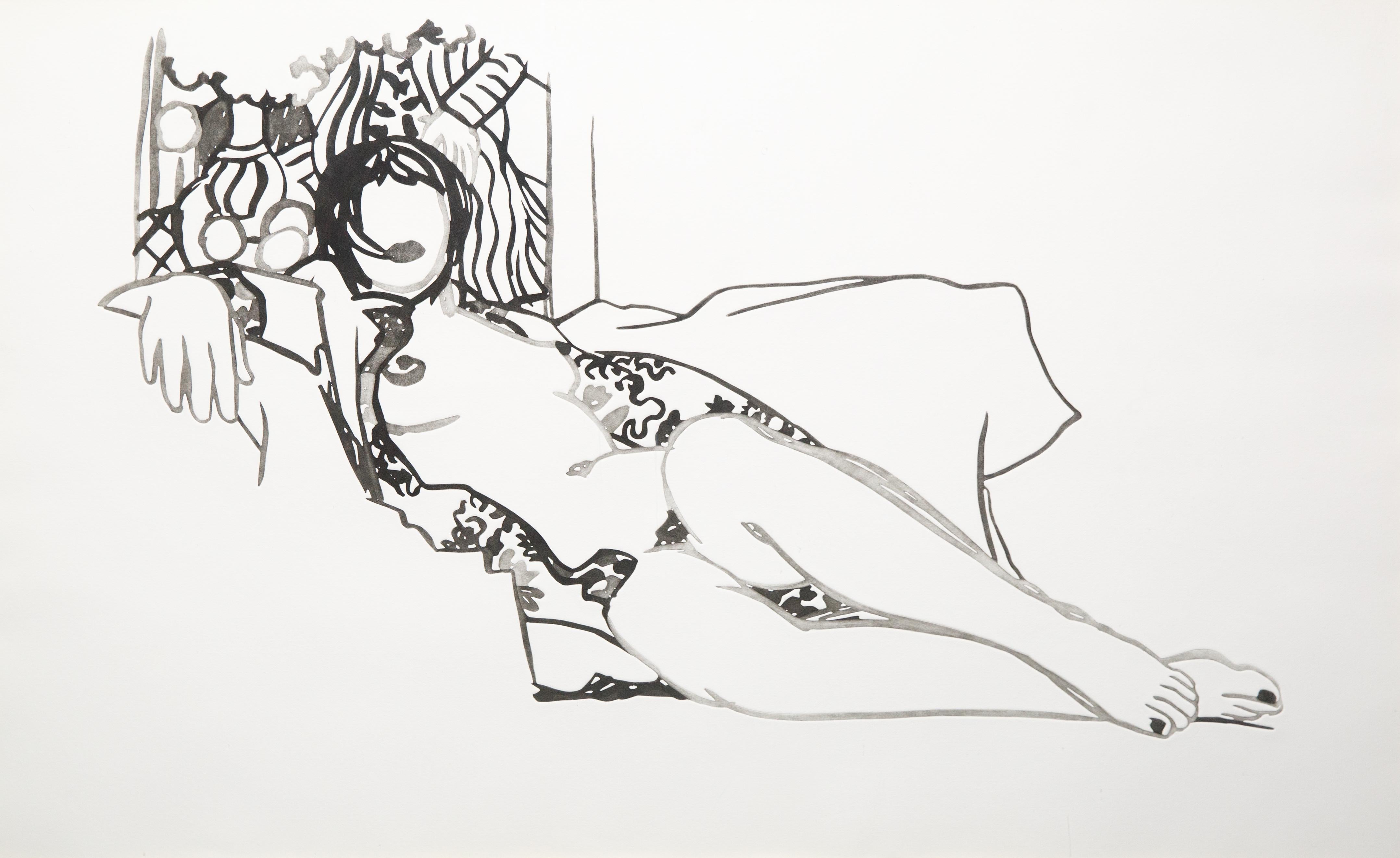Items Similar to l Teatro delle Maschere
Want more images or videos?
Request additional images or videos from the seller
1 of 5
Marino Marinil Teatro delle Maschere1973
1973
About the Item
Marino Marini
"ll Teatro delle Maschere" 1973
Lithograph
Signed and Numbered
Ed. 25
Sheet Size: approx 27.5 x 39 inches
Framed Size: approx 35 x 47 inches
Marino Marini (February 27, 1901 — August 6, 1980) was an Italian sculptor.
Born in Pistoia, Marini is particularly famous for his series of stylised equestrian statues, which feature a man with outstretched arms on a horse. Probably the most famous example is The Angel of the City at the Peggy Guggenheim Collection, Venice.
He attended the Accademia Di Belle Arti in Florence in 1917. Although he never abandoned painting, Marini devoted himself primarily to sculpture from about 1922. From this time his work was influenced by Etruscan art and the sculpture of Arturo Martini. Marini succeeded Martini as professor at the Scuola d'Arte di Villa Reale in Monza, near Milan, in 1929, a position he retained until 1940.
During this period Marini traveled frequently to Paris, where he associated with Massimo Campigli, Giorgio de Chirico, Alberto Magnelli, and Filippo Tibertelli de Pisis. In 1936 he moved to Tenero-Locarno, in Ticino Canton, Switzerland; during the following few years the artist often visited Zürich and Basel, where he became a friend of Alberto Giacometti, Germaine Richier and Fritz Wotruba. In 1936 he received the Prize of the Quadriennale of Rome. He accepted a professorship in sculpture at the Accademia di Belle Arti di Brera, Milan, in 1940.
In 1946 the artist settled permanently in Milan. He participated in Twentieth-Century Italian Art at the Museum of Modern Art in New York in 1944. Curt Valentin began exhibiting Marini's work at his Buchholz Gallery in New York in 1950, on which occasion the sculptor visited the city and met Jean Arp, Max Beckmann, Alexander Calder, Lyonel Feininger, and Jacques Lipchitz. On his return to Europe, he stopped in London, where the Hanover Gallery had organized a solo show of his work, and there met Henry Moore. In 1951 a Marini exhibition traveled from the Kestner-Gesellschaft Hannover to the Kunstverein in Hamburg and the Haus der Kunst of Munich. He was awarded the Grand Prize for Sculpture at the Venice Biennale in 1952 and the Feltrinelli Prize at the Accademia dei Lincei in Rome in 1954. One of his monumental sculptures was installed in the Hague in 1959.
Retrospectives of Marini's work took place at the Kunsthaus Zürich in 1962 and at the Palazzo Venezia in Rome in 1966. His paintings were exhibited for the first time at Toninelli Arte Moderna in Milan in 1963-64. In 1973 a permanent installation of his work opened at the Galleria d'Arte Moderna in Milan, and in 1978 a Marini show was presented at the National Museum of Modern Art in Tokyo.
Marini died in Viareggio. There is a museum dedicated to his work in Florence (in the former church of San Pancrazio); his work may also be found in museums in Italy and around the world, such as the Civica Galleria d'Arte Moderna in Milan and the Hirshhorn Museum and Sculpture Garden in Washington, D.C. Marini's work is authenticated by the experts at the Marino Marini Foundation in Pistoia, Italy.
- Creator:Marino Marini (1901-1980, Italian)
- Creation Year:1973
- Dimensions:Height: 31 in (78.74 cm)Width: 43 in (109.22 cm)Depth: 1 in (2.54 cm)
- Medium:
- Movement & Style:
- Period:
- Condition:
- Gallery Location:Missouri, MO
- Reference Number:1stDibs: LU74732275871
About the Seller
5.0
Vetted Seller
These experienced sellers undergo a comprehensive evaluation by our team of in-house experts.
Established in 1970
1stDibs seller since 2017
141 sales on 1stDibs
Typical response time: 21 hours
- ShippingRetrieving quote...Ships From: Missouri, MO
- Return PolicyA return for this item may be initiated within 2 days of delivery.
More From This SellerView All
- In the BoudoirBy William AblettLocated in Missouri, MOAquating Engraving Image Size: Approx 19 x 15.5 Framed Size: Approx. 28.5 x 24.5 William Albert Ablett (1877 - 1937) Although born to English parents, William Ablett lived in Par...Category
Early 20th Century Art Deco Figurative Prints
MaterialsEngraving, Aquatint
- BostonBy John William HillLocated in Missouri, MOJohn William Hill (1812-1879) "Boston" 1857 Hand-Colored Engraving Site Size: 29 x 41 inches Framed Size: 39 x 52 inches Born in London, England, John William Hill came to America with his family at age 7. His father, John Hill, was a well-known landscape painter, engraver, and aquatintist. John William had a career of two phases, a city topographer-engraver and then, the leading pre-Rafaelite school painter in this country. Employed by the New York Geological Survey and then by Smith Brothers...Category
1850s Pre-Raphaelite Landscape Prints
MaterialsEngraving, Aquatint
- The Circus Dressing RoomBy Dame Laura KnightLocated in Missouri, MODame Laura Knight (1877-1970) "The Circus Dressing Room" 1925 Aquatint Engraving Signed in Pencil Lower Right Image Size: approx 14 x 9 inches Framed Size: approx. 23.5 x 18.5 inche...Category
1920s Realist Figurative Prints
MaterialsAquatint, Engraving
- The Circus Dressing RoomBy Dame Laura KnightLocated in Missouri, MODame Laura Knight "The Circus Dressing Room" 1925 Etching Ed. 20 Signed Lower Right Image Size: approx. 14 x 10 inches Framed Size: approx. 23.5 x 17.75 inches An English impressio...Category
1920s Realist Figurative Prints
MaterialsAquatint
- Don JuanBy Louis IcartLocated in Missouri, MOAquating Engraving Image Size: approx. 20 1/4 x 13 3/8 Framed Size: 28 x 20.5 inches Pencil Signed Lower Right Louis Justin Laurent Icart was born in Toulouse in 1890 and died in Paris in 1950. He lived in New York City in the 1920s, where he became known for his Art-Deco color etchings of glamourous women. He was first son of Jean and Elisabeth Icart and was officially named Louis Justin Laurent Icart. The use of his initials L.I. would be sufficient in this household. Therefore, from the moment of his birth he was dubbed 'Helli'. The Icart family lived modestly in a small brick home on rue Traversière-de-la-balance, in the culturally rich Southern French city of Toulouse, which was the home of many prominent writers and artists, the most famous being Henri de Toulouse-Lautrec. Icart entered the l'Ecole Superieure de Commerce de Toulouse in order to continue his studies for a career in business, particularly banking (his father's profession). However, he soon discovered the play writings of Victor Hugo (1802-1885), which were to change the course of his life. Icart borrowed whatever books he could find by Hugo at the Toulouse library, devouring the tales, rich in both romantic imagery and the dilemmas of the human condition. It was through Icart's love of the theater that he developed a taste for all the arts, though the urge to paint was not as yet as strong for him as the urge to act. It was not until his move to Paris in 1907 that Icart would concentrate on painting, drawing and the production of countless beautiful etchings, which have served (more than the other mediums) to indelibly preserve his name in twentieth century art history. Art Deco, a term coined at the 1925 Paris Exposition des Arts Decoratifs, had taken its grip on the Paris of the 1920s. By the late 1920s Icart, working for both publications and major fashion and design studios, had become very successful, both artistically and financially. His etchings reached their height of brilliance in this era of Art Deco, and Icart had become the symbol of the epoch. Yet, although Icart has created for us a picture of Paris and New York life in the 1920s and 1930s, he worked in his own style, derived principally from the study of eighteenth-century French masters such as Jean Antoine Watteau, François Boucher and Jean Honoré Fragonard. In Icart's drawings, one sees the Impressionists Degas...Category
1920s Art Deco Figurative Prints
MaterialsEngraving, Aquatint
- In BrittanyBy Manuel RobbeLocated in Missouri, MOColor Engraving Image Size: approx 14 x 19.5 Framed Size: approx 21 x 26 3/4 Signed in Pencil Emmanuel Robbe called "Manuel Robbe", born in Paris on 16 December 1872 And died in Ne...Category
Early 1900s Impressionist Figurative Prints
MaterialsEngraving, Aquatint
You May Also Like
- "Triade" by Marino Marini, Lithography, Triad, Figurative PrintBy Marino MariniLocated in Köln, DESet of 3 etchings and aquatints in colours by Marino Marini "Triade", 1976-1978 73,7 x 57,5 cm Copy 4/90 Edition of 125 Marino Marini (Pistoia 1901–1980 Viareggio 1980) - Hardly an...Category
1970s Modern Figurative Prints
MaterialsEtching, Aquatint
- From "Marino from Goethe" by Marino Marini, Green, Black, Figurative PrintBy Marino MariniLocated in Köln, DEEtching and aquatint in colours by Marino Marini From "Marino from Goethe", 1979/1980 90 x 62,8 cm Copy 10/125 Edition of 195 Marino Marini (Pistoia 1901–1980 Viareggio 1980) - Ha...Category
1970s Modern Figurative Prints
MaterialsEtching, Aquatint
- Catherina Dorothea Viehman (Six Fairy Tales from the Brothers Grimm) HockneyBy David HockneyLocated in New York, NYCatherina Dorothea Viehman (from Six Fairy Tales from the Brothers Grimm) Etching and aquatint on W S Hodgkinson paper watermarked "DH" and "PP" Paper 1...Category
1960s Modern Figurative Prints
MaterialsAquatint, Etching
- Rapunzel, Rapunzel let down your Hair (Six Fairy Tales from the Brothers Grimm)By David HockneyLocated in New York, NYSheet from “Rapunzel” story (from Six Fairy Tales from the Brothers Grimm) Text printed letterpress and “Rapunzel, Rapunzel let down your Hair” etching and aquatint on W S Hodgkinson paper watermarked "DH" and "PP" Etching 10.5 × 9.85 in. / 26.7 × 25 cm Paper 17.5 x 12.25 in. / 45 x 31 cm Unsigned: apart from the published edition of 400 books and 100 portfolios. This is one of eleven images recently found in our archive which we have decided to make available. There is one only of each image. Perhaps the most famous story from the Grimm Brothers, Rapunzel spins the tale of a beautiful young princess locked away by an evil sorceress. Captured in this scene is the moment a King's son came across the tower and fell in love with her sweet singing, beseeching her: 'Rapunzel, Rapunzel, Let down your hair to me.' Though the sorcerer banishes Rapunzel and maims the prince, they are of course ultimately reunited to live happily together. Hockney illustrates this scene with incredible texture detail: layers of aquatint defining the soft forest floor, delicate hatching on the horse's haunch, the tower's tight crosshatching, and of course the lyrical gesture of Rapunzel's hair which cascades from the upper right corner. This print from our publisher's archives is one of thirty-nine etchings from David Hockney’s 1969 "Six Fairy Tales from the Brothers Grimm". Hockney worked on this series with Paul Cornwall-Jones at Petersburg Press over the course of a year. 400 books and 100 portfolios plus artist’s proofs were printed. The artist illustrated six stories: 'The Little Sea Hare', 'Fundevogel', 'Rapunzel', 'The Boy who left Home to learn Fear', 'Old Rinkrank' and 'Rumpelstilzchen'. According to Hockney, "They're fascinating, the little stories, told in a very, very simple, direct, straightforward language and style, it was this simplicity that attracted me. They cover quite a strange range of experience, from the magical to the moral." He was inspired by earlier illustrators of the tales, including Arthur Rackham and Edmund Dulac, but Hockney reimagined the stories for a modern audience. The frontispiece for the project pictures Catherina Dorothea Viehmann, the elderly German woman who recounted fairy tales to the Grimm brothers when they were in their late twenties. In Hockney's words: “The stories weren’t written by the Brothers Grimm…they came across this woman called Catherina Dorothea Viehmann, who told 20 stories to them in this simple language, and they were so moved by them that they wrote them down word for word as she spoke.” Hockney drew the German woman in the style of Dürer, formally posed yet naturalistic against an impeccably crosshatched swath of grey. Hockney wrote about the surreal plots contained in the Brothers Grimm tales: “…the stories really are quite mad, when you think of it, and quite strange. In modern times, it’s like the story of a couple moving into a house, and in the next door’s garden they see this lettuce growing: and the wife develops this craving for the lettuce that she just must have and climbs over to pinch it, and the old woman who lives in the house next door says well, you can have the lettuce if you give me your child, and they agree to it. And if you put it into terms like this and imagine them in their semi-detached house agreeing to it all, it seems incredible.” Hockney enhanced this unbelievable quality with his illustrations which traverse inky, dense areas of intense crosshatching and minimalist line work. Rather than serving as direct interpretations of the plot, the images capture moments and feelings. Some portray the magic yet mundane -- Rapunzel's tiny face gazing placidly at a well-tended garden, or project danger and unease as in The Haunted Castle, with its citadel perched atop craggy rocks, dramatically lit against a dark sky. Hockney's sense of humor comes through in Cold Water About to Hit the Prince, in which a man tucked into bed stares straight at a rush of water drawn with a splash (this technique is likely Spit Bite, and the resultant bold spattered brushstroke contrasts beautifully with the rest of the carefully crosshatched image). A Wooded Landscape, with its lush textures, conveys the bucolic setting of a fairy tale and the potential danger hidden within the woods -- the viewer is left to wonder who lives on the hilltop in that diminutive cabin. These etchings defy the conventions of beautiful fairy tale illustrations...Category
1960s Modern Landscape Prints
MaterialsEtching, Aquatint
- FishermanBy Peter DoigLocated in New York, NYA superb impression with vibrant colors. A superb impression of this color aquatint and etching on Zerkall paper. Edition of 119. Signed and dated in pencil by Doig. Proofed by the a...Category
Early 2000s Modern Abstract Prints
MaterialsColor, Etching, Aquatint
- Monica Nude with MatisseBy Tom WesselmannLocated in New York, NYA very good impression of this etching and aquatint. Signed 75/75 in pencil by Wesselmann.Category
1990s Modern Nude Prints
MaterialsEtching, Aquatint
Recently Viewed
View AllMore Ways To Browse
August Munich
Vintage Equestrian Prints
Angelic Statue
Angel Statue
Statues Of Angels
Equestrian 1970
Monumental Belle
Horse Garden Sculpture
Stylised Horse
San Marino Vintage
Dior Equestrian
D C Moore Gallery
Calder Etching
Marino Marini Lithograph
Alberto Giacometti Framed
Equestrian Statue
Venice San Giorgio
Giacometti Etching




